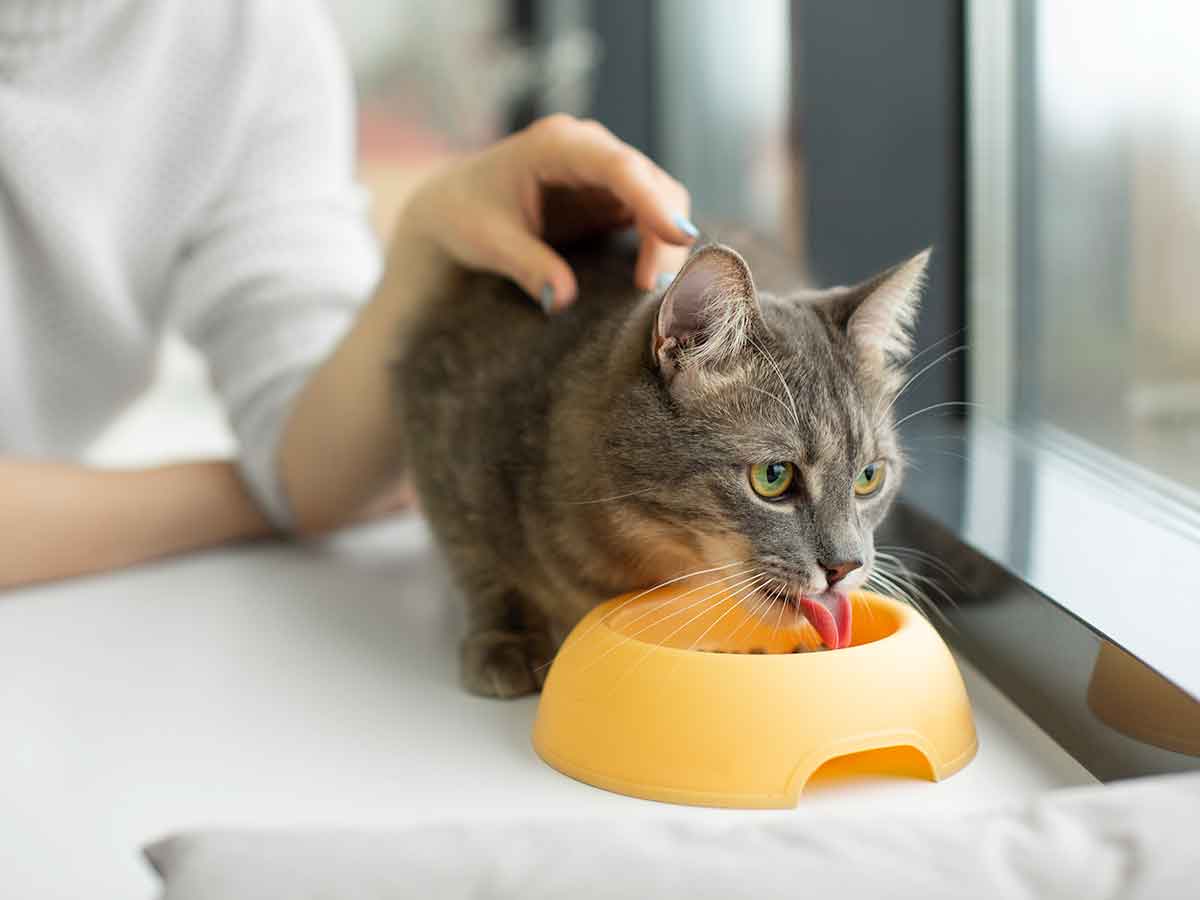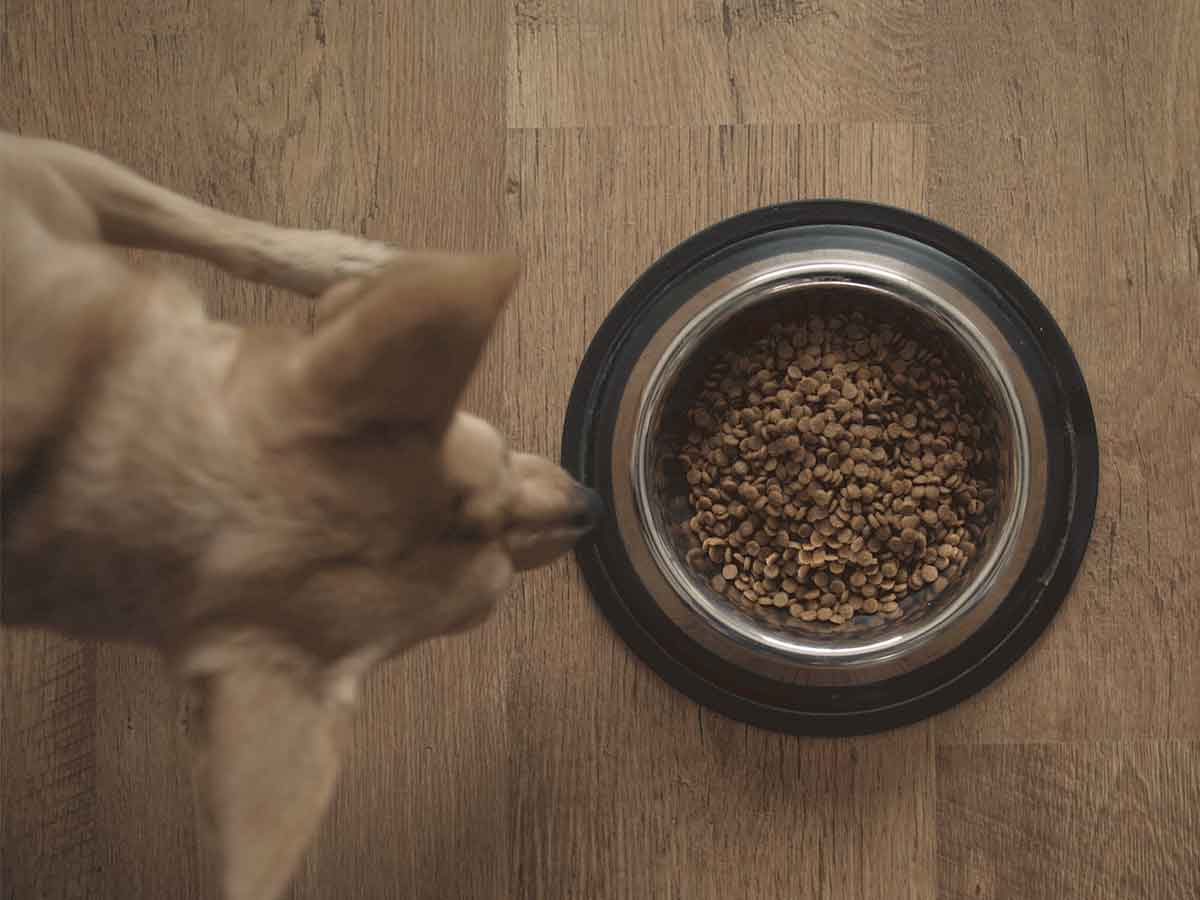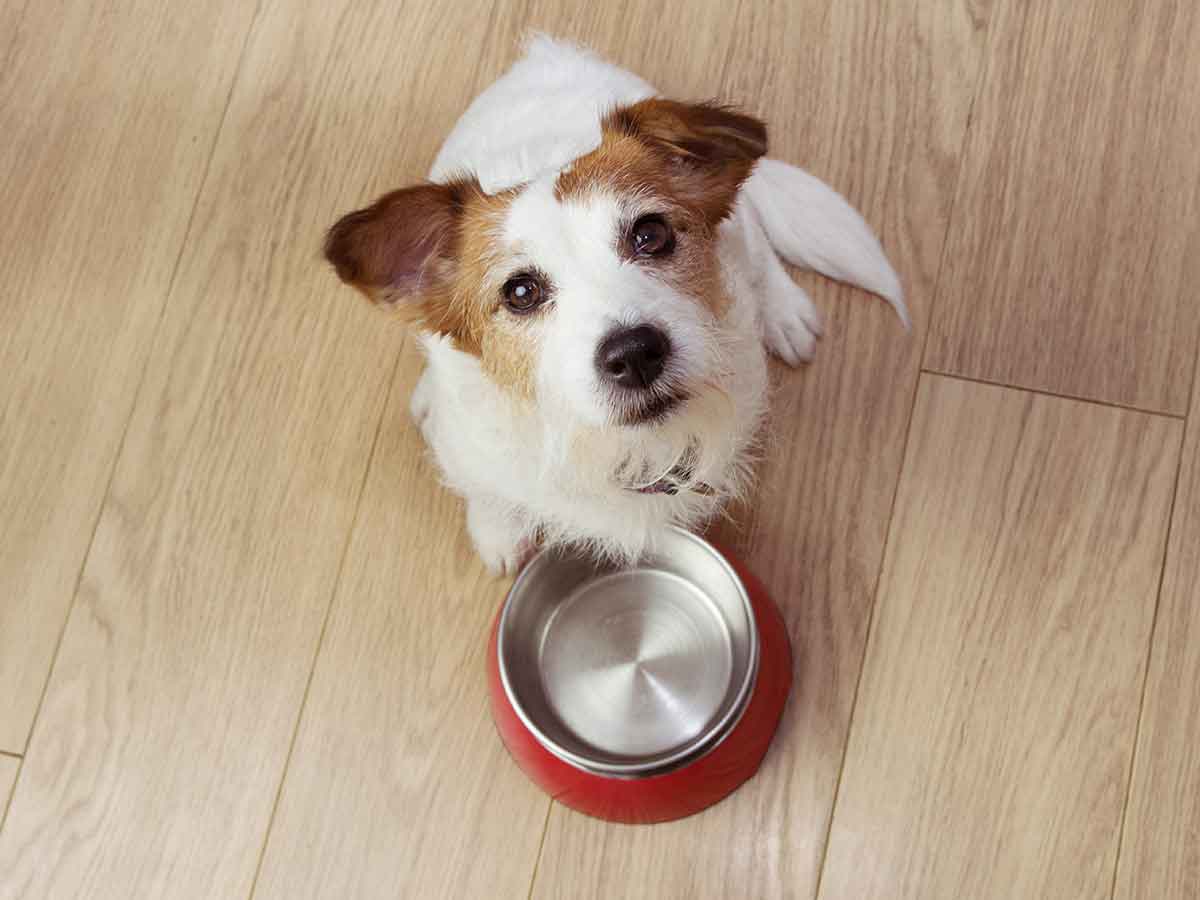Dietary control
If you have a pet who’s been diagnosed with diabetes, chances are you’re taking all the important steps to keep him healthy. You’re probably trying to keep his condition under control by including an insulin regimen provided by your veterinarian, such as VETSULIN® (porcine insulin zinc suspension).
However, you probably also know that insulin is only one component of good diabetes control. Diet is also very important. A diet must provide for all of your dog’s or cat’s nutritional needs and should minimize fluctuations in glucose concentrations.1
There are a number of prescription diets that have been specially formulated for the management of diabetic dogs and cats. These can be particularly useful for achieving weight loss in obese pets. However, many diabetic dogs and cats can be managed on a carefully controlled program using a “normal” diet, as long as it’s nutritionally appropriate for your pet.1
(And remember: clean drinking water should be available at all times. A reduction in excessive water consumption may indicate successful management of diabetes mellitus.)
Importance of an ideal body weight
In pets that are underweight or overweight, pursue appropriate weight gain or loss to help your pet achieve her ideal body weight.
Obesity contributes to insulin resistance. Overweight pets should lose weight in a gradual, controlled fashion. Weight loss in obese animals decreases the insulin requirement.3
For underweight animals, avoid calorie-restricted diets and diets high in carbohydrates.2
Your veterinarian or veterinary technician will help you calculate the ideal body weight and food requirements for your diabetic dog and monitor her weight. Consider a measuring cup and/or scale to make sure you’re feeding accurately.
In addition to nutritional considerations, work with your veterinarian to make sure your pet is getting an adequate amount of exercise appropriate to her weight, health, and age.
Prescription diets
If you find that your pet needs a little extra help with his or her nutrition, complete prescription diets for diabetic pets are available from your veterinarian. Your veterinarian or veterinary technician will advise you on the correct type of diet to meet your pet’s specific needs.3
● Hill’s® Pet Nutrition
● Royal Canin®
● Purina®
● Eukanuba® Special Pet Foods
● Eukanuba® Special Pet Foods
Essential features of a diet
For dogs, the essential features of the diet should be:
● Consistent in amount and timing from day to day to prevent unnecessary alterations in insulin requirement1
● High in complex carbohydrates and fiber so that glucose is released in a steady fashion from the gut3
● Given so that glucose absorption from the gut coincides with peak action of administered insulin3
● Of the correct caloric value to help the dog achieve optimal weight3
● Of the correct caloric value to help the dog achieve optimal weight3
For cats, the essential features of the diet should be:
● Consistent in amount and timing from day to day to prevent unnecessary alterations in insulin requirement3
● Fat-restricted.3
● Contain a high-quality, highly digestible protein source (eg, eggs or meat rather than soybean or corn gluten meal).3
● Of the correct caloric value to help the cat achieve optimal weight.3
● Low in carbohydrates. Canned food is generally lower in carbohydrates and a better choice for cats than dry food.3
Additional considerations about nutrition in dogs
Some factors that need to be taken into consideration are:
Will your dog eat the food?
Some dogs can be fussy eaters. You may have difficulty trying to convince your dog to eat a low-fat, high-fiber diet. Don’t worry — your dog can also be stabilized on her usual food, although she will need the same food every day and the insulin dose may need to be slightly higher.
Is your dog underweight?
A diet high in fiber is not suitable, as it may cause further weight loss. Fiber may have to be restricted and additional supplements given until the ideal body weight is reached.2 If your dog is underweight, your veterinarian will advise you on a diet to help your dog regain her normal weight.
Are his treats diabetic-friendly?
We love to give our furry friends treats, but when dealing with a diabetic dog, it’s very important to give treats in moderation and to give only those that are nutritionally appropriate for diabetic pets.
Timing of meals
Your veterinarian will advise you on the proper feeding of your dog. In general, meals should be timed so that the presence of food in the gastrointestinal tract coincides with the peak action of the administered insulin. This will minimize fluctuations in blood glucose concentrations and, thus, episodes of hyperglycemia and hypoglycemia.2
For dogs getting insulin once daily, the following may be appropriate:
● The first meal (two-thirds of the daily amount) is given before the morning insulin injection. This allows you to see that your dog is feeling well and eating normally before you administer the insulin.2
● The second meal (the remainder of the daily amount) is usually given about six to eight hours later.2
For dogs getting insulin twice daily, the following may be appropriate:
● Feed meals of approximately equal size, spaced evenly during the day.2
● The first meal (eg, one-half of the daily ration) is given just before the morning insulin injection. This allows you to see that the dog is feeling well and eating normally before the insulin is given.
● The second meal (the remainder of the daily ration) is usually given about 10 to 12 hours later, before the second insulin injection.2
All trademarks cited are the property of their respective owners.
References:
1. Nutrition for Dogs With Diabetes. Merck Animal Health. https://www.merck-animal-health-usa.com/vetsulin/dogs/nutrition-for-dogs-with-diabetes
2. Nutrition for Dogs With Diabetes. VETSULIN®. https://www.vetsulin.com/dogs/diabetes-nutrition
3. Nutrition for Cats With Diabetes. Merck Animal Health. https://www.merck-animal-health-usa.com/vetsulin/cats/nutrition-for-catswith-diabetes
Important Safety Information:
VETSULIN® and VETPEN® are for use in animals only. Dogs and cats known to have an allergy to pork or pork products should not be treated with VETSULIN®. VETSULIN® is contraindicated during periods of hypoglycemia. Animals with severe ketoacidosis, anorexia, lethargy, and/or vomiting should be stabilized with short-acting insulin and appropriate supportive therapy before use. As with all insulin products, careful patient monitoring for hypoglycemia and hyperglycemia is essential. Overdosage can result in profound hypoglycemia and death. Progestogen and glucocorticoid use should be avoided. The safety and effectiveness of VETSULIN® in puppies, kittens, breeding, pregnant, and lactating dogs and cats has not been evaluated. Keep out of reach of children. Avoid contact with eyes. In case of contact, immediately flush eyes with copious amounts of water for at least 15 minutes. Accidental injection may cause clinical hypoglycemia. In case of accidental injection, seek medical attention immediately. Exposure to the product may induce a local or systemic allergic reaction in sensitized individuals. For complete safety information, refer to the product label.
Want to share this article?
More like this
What to feed fluffy? Dry or wet? Both?
Every cat is different when it comes to wet or dry food. Find out which one is best for you.
Does your dog need to go on a diet?
A chubby pup might be cute, but it’s best for your dog to maintain a healthy weight. Here’s how to tell if he’s put on a few too many pounds.
What you should and shouldn’t feed your dog
Can people food be ok for pets? Sometimes – but you need to know the rules





 Austria
Austria Belgium
Belgium Czech Republic
Czech Republic Denmark
Denmark Europe
Europe Finland
Finland France
France Germany
Germany Greece
Greece Hungary
Hungary Ireland
Ireland Israel
Israel Italy
Italy Netherlands
Netherlands Norway
Norway Poland
Poland Portugal
Portugal Romania
Romania Spain
Spain Sweden
Sweden Turkey
Turkey United Kingdom
United Kingdom United States
United States